Abstract
Mechanical and ethological isolation between species is widespread in angiosperms with specialized animal-pollinated flowers, being recorded in 29 species groups belonging to 27 genera and 16 families. Mechanical isolation occurs in two forms. (i) The common type, designated the Salvia type, operates when two or more species of flowers are adapted for different groups of pollinators with different body sizes and shapes. (ii) In the Pedicularis type two flower species have the same species of pollinator but pick up pollen from different parts of the pollinator's body. Four forms of ethological isolation are recognized. (i) In the Aquilegia type, which is widespread, ethological isolation is a side effect of mechanical isolation. (ii) The flower-constancy type, as the name suggests, is based on flower-constant foraging behavior. (iii) In the Ophrys type, floral scents attract male bees or wasps and play a role in their mating behavior; different species of flowers, often orchids, have different scents and attract different sets of hymenopteran species. (iv) The monotropy type occurs in plants pollinated by hymenopterans with species-specific or group-specific flower preferences for nutritive purposes (monotropic and oligotropic bees and fig wasps). Three modes of origin of floral isolation are confirmed by evidence: (i) mechanical and ethological isolation arising as a by-product of allopatric speciation, (ii) ethological isolation developing by selection for reproductive isolation per se, and (iii) mechanical isolation arising as a by-product of character displacement. Mode of origin i accounts for the Salvia and Aquilegia types of isolation in nine known species groups and for the Ophrys type in one group. Mode of origin ii accounts for the flower-constancy type of ethological isolation in two species groups. Mode of origin iii explains mechanical isolation in two groups. Sympatric origin of floral isolation by hybrid speciation and by flower constancy has been proposed, but these modes are undocumented and improbable.
Full text
PDF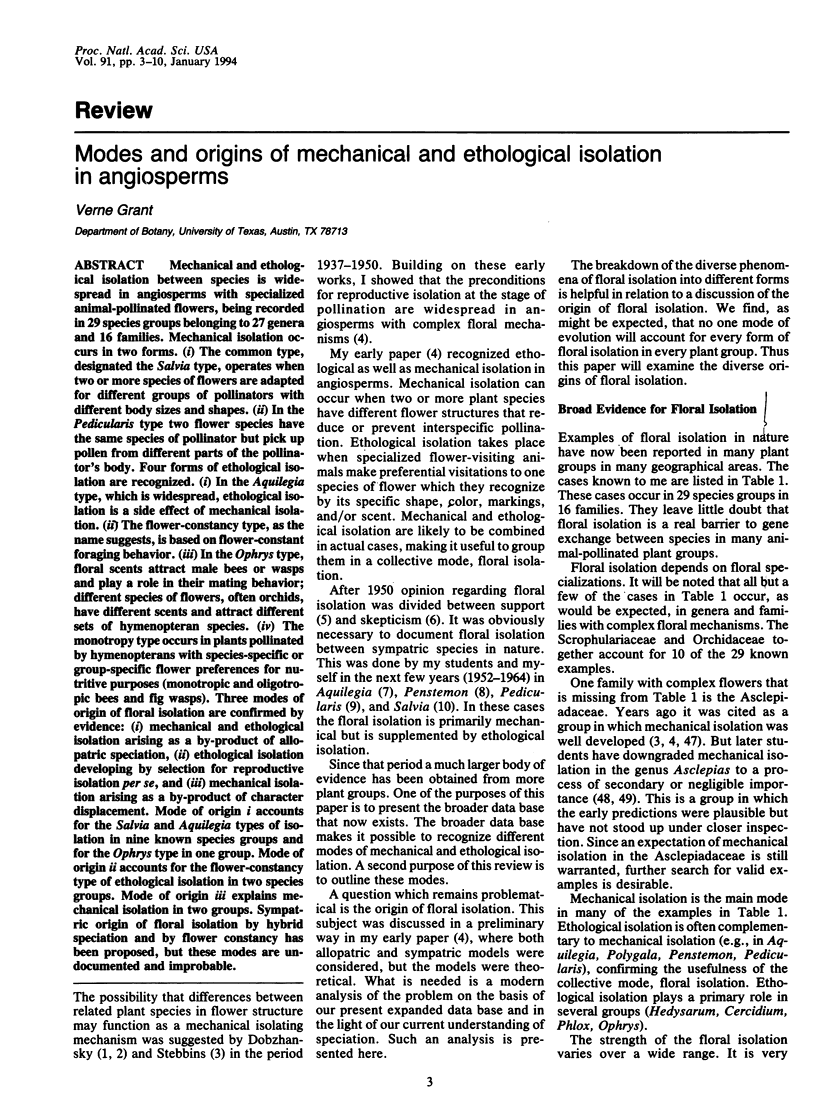


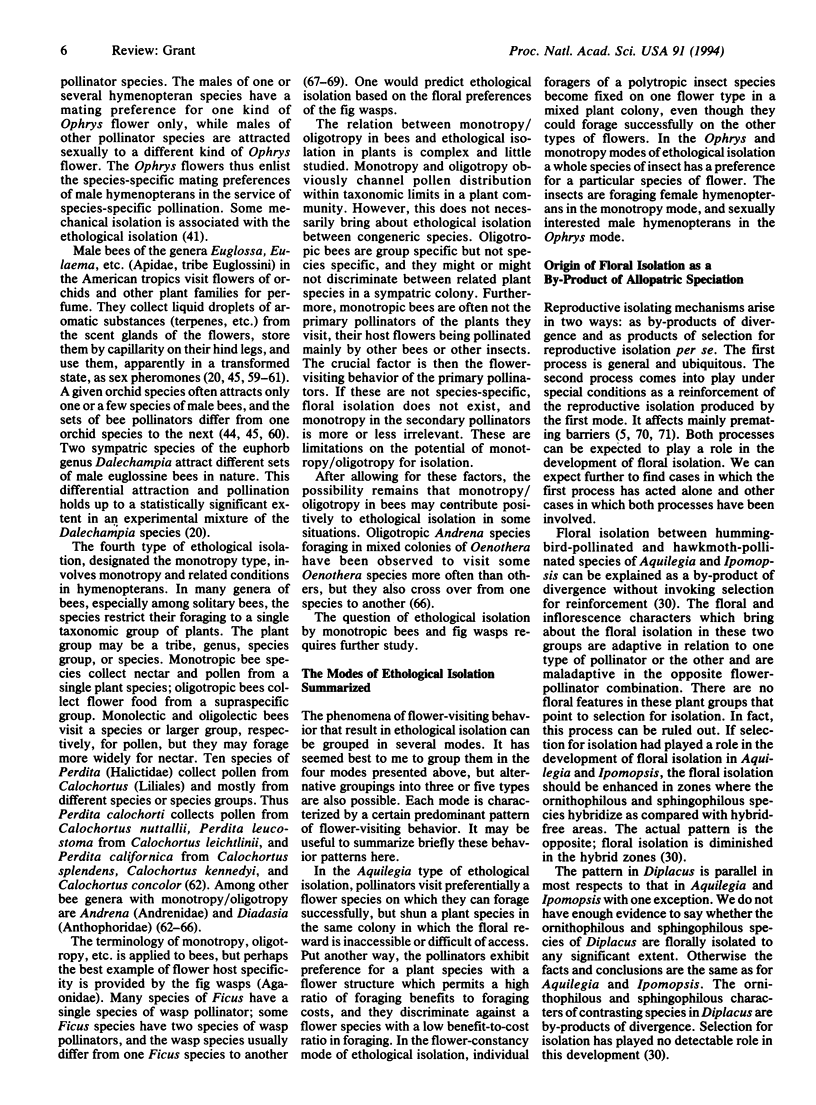

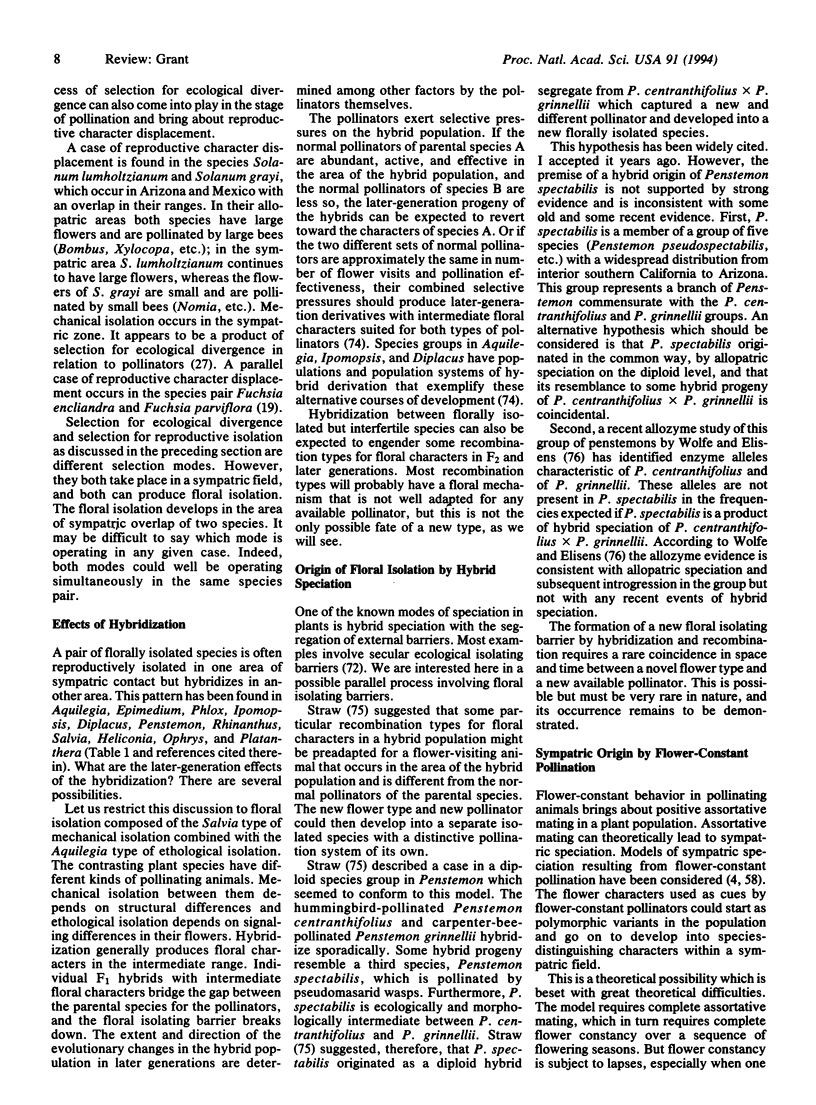
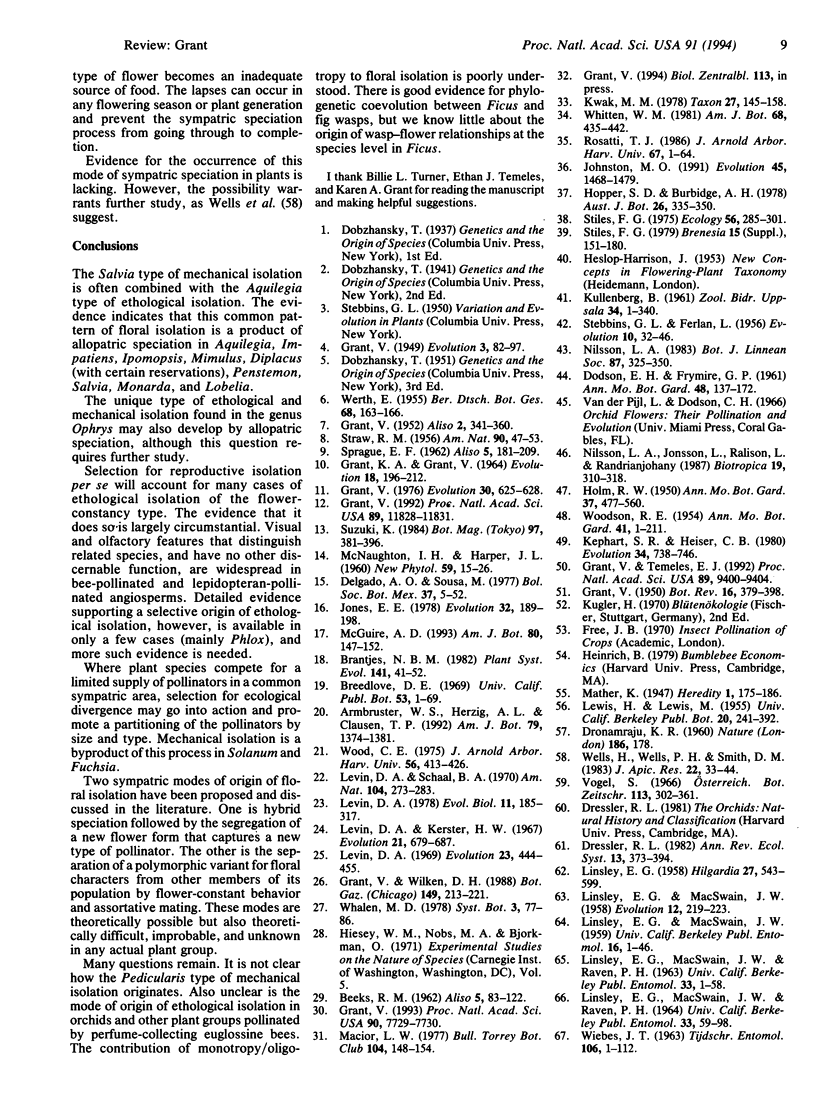
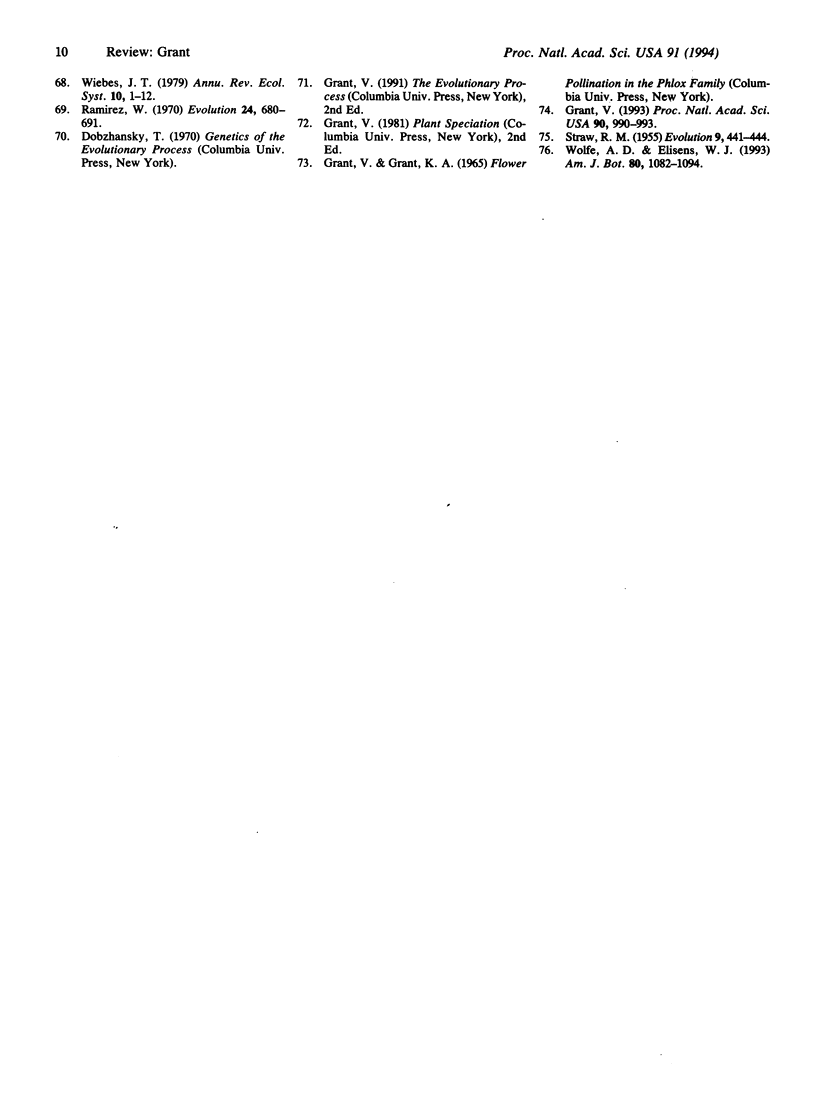
Selected References
These references are in PubMed. This may not be the complete list of references from this article.
- Grant V. Effects of hybridization and selection on floral isolation. Proc Natl Acad Sci U S A. 1993 Feb 1;90(3):990–993. doi: 10.1073/pnas.90.3.990. [DOI] [PMC free article] [PubMed] [Google Scholar]
- Grant V. Floral isolation between ornithophilous and sphingophilous species of Ipomopsis and Aquilegia. Proc Natl Acad Sci U S A. 1992 Dec 15;89(24):11828–11831. doi: 10.1073/pnas.89.24.11828. [DOI] [PMC free article] [PubMed] [Google Scholar]
- Grant V. Origin of floral isolation between ornithophilous and sphingophilous plant species. Proc Natl Acad Sci U S A. 1993 Aug 15;90(16):7729–7733. doi: 10.1073/pnas.90.16.7729. [DOI] [PMC free article] [PubMed] [Google Scholar]
- Grant V., Temeles E. J. Foraging ability of rufous hummingbirds on hummingbird flowers and hawkmoth flowers. Proc Natl Acad Sci U S A. 1992 Oct 15;89(20):9400–9404. doi: 10.1073/pnas.89.20.9400. [DOI] [PMC free article] [PubMed] [Google Scholar]


